 |
 |
 |
| |
Characterization of Patients with Viral Hepatitis at an Urban Hospital in Washington, DC
2009-2013
|
| |
| |
Reported by Jules Levin
IDSA 2014 Oct 8-12 Philadelphia, PA
Lisa K. Fitzpatrick, MD, MPH / Norman A. Brown, MD, MBA / Jeremiah Garcia BBA, RHIT, CHPS/ Joshua B. Stierwalt, MA
United Medical Center, Washington DC
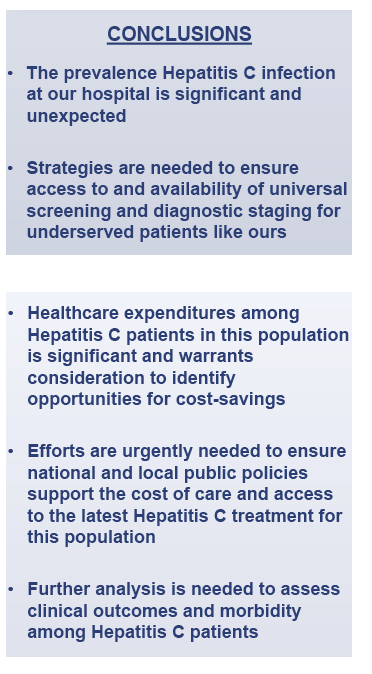
Program abstract:
Background: Since the CDC now recommends routine Hepatitis C screening among baby boomers, identifying patients with this infection has become a public health imperative. In Washington, DC an area with high HIV and injection drug use prevalences understanding the disease burden of both Hepatitis B and C is critical due to the impact of co-infection. Despite this, the prevalence of Hepatitis B and C had not been previously assessed at our hospital. Given the absence of these data we assessed the demographics and volume of persons with Hepatitis B and C patronizing our facility.
Methods:
The hospital health information system was queried for hospital patients with Hepatitis B and C diagnosis codes from 2009-2013 irrespective of site of service and reason for presentation. This list was further stratified to include persons presenting for either hospital or emergency department (ED) admission. Demographic data and primary, secondary and tertiary diagnosis codes were identified for each patient. Univariate analysis was conducted to epidemiologically characterize Hepatitis patients seeking hospital-based care.
Results: Over the 5 year period, 5,129 visits for 4,201 individual patients occurred among patients with Hepatitis B and C. The median age was 54 (range 17-91), 63% were male, 76% were publically-insured and 13% were from correctional settings. Over 95% were African-American and 68% resided in Southeast, Washington, DC. Because treatment for Hepatitis B and C were not available at our institution, no data were available for treatment status. Primary, secondary and tertiary diagnoses were largely related to chronic medical conditions rather than Hepatitis.
Conclusion: The prevalence of Hepatitis B and C infection in Southeast Washington, DC is significant. Given the need to expand testing and treatment for these diseases, strategies are needed to ensure availability and access to care for this population. In addition, this population was largely insured through public insurance programs which suggests public policy will be needed to support the cost of care for this group.
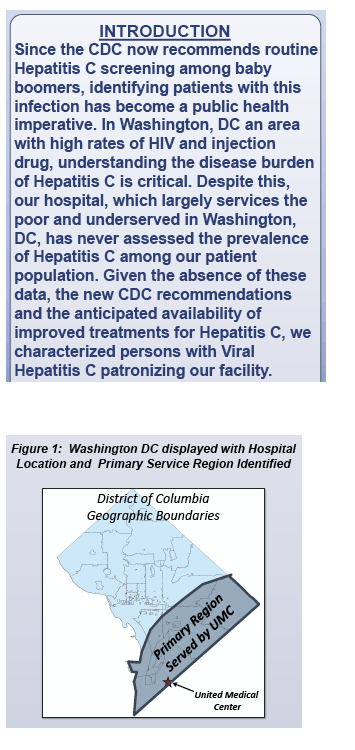
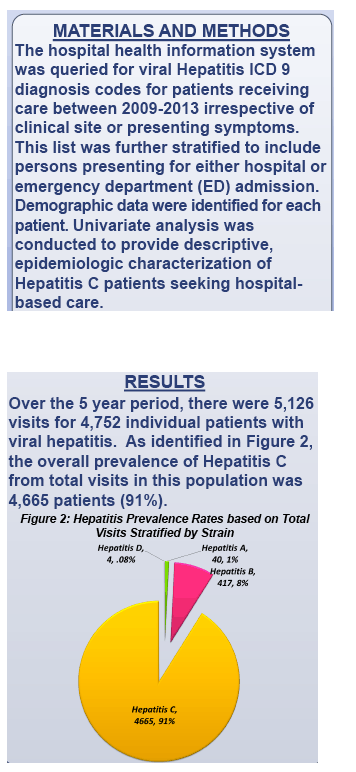
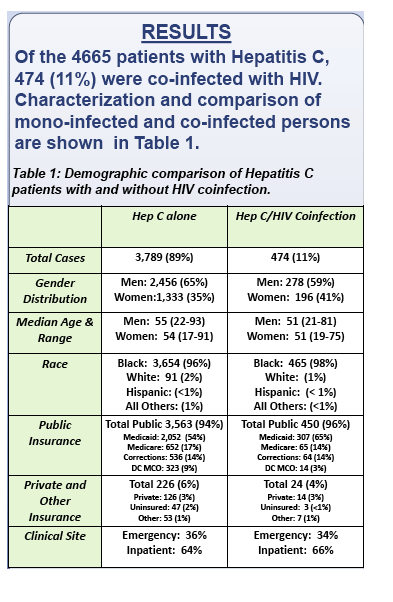
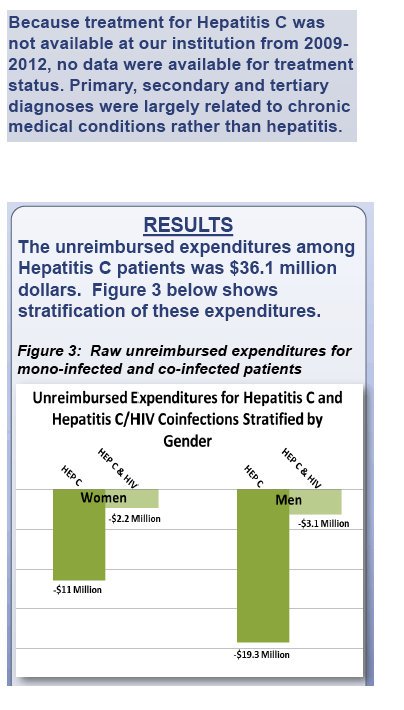

|
| |
|
 |
 |
|
|